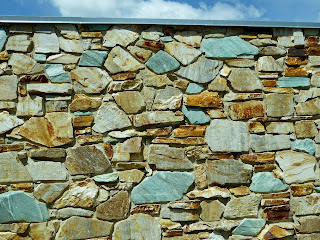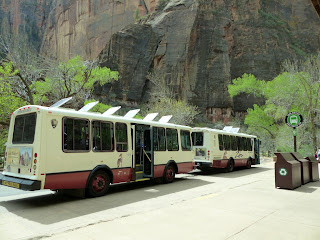 After we’d gone to Golden Spike National Historic Site, we
headed back to Ogden, Utah. Keeping to the train theme, we visited The
Museums at Union Station at the (guess where!) old Union Train Depot.
Some friends had been there last year and suggested it to us. The station was
built in 1924 after the 1889 building burned down.
After we’d gone to Golden Spike National Historic Site, we
headed back to Ogden, Utah. Keeping to the train theme, we visited The
Museums at Union Station at the (guess where!) old Union Train Depot.
Some friends had been there last year and suggested it to us. The station was
built in 1924 after the 1889 building burned down.
During its peak, 120 trains a day moved through Ogden, with
17 tracks just for passenger service. I
assume there were more than these few wooden benches for all those people!
Now the old station houses four separate and unique museums
with exhibits on trains, guns, cowboys and cars--pretty much something for
everybody. (Well, maybe not, but I
figured I’d give it a shot.)
First up was the Utah
State Cowboy and Western Heritage Museum, just a big room dedicated to Utah cowboys (and cowgirls). There's
As you’d expect from the location alone, the Utah State Railroad Museum is the
biggest one. There’s a big display on the transcontinental railroad...just in
case you weren’t paying attention at Golden Spike.
They have the safe where the original Golden Spike was
stored for years after an earthquake damaged the museum at Stanford University
where it was on display in California. Right now it contains the Utah Centennial Golden Spike
on loan from the Utah State Treasurer’s Office.
The Wattis-Dumke Model
Railroad exhibit has scale model scenes of local terrain with lots of model trains running
constantly. (I liked this part best.)
Outside in the Spencer
S. Eccles Rail Center are vintage locomotives and other train cars and
cabooses. There’s even an old steam powered snow plow, although I’m pretty sure
this isn’t it.
Back inside, we headed upstairs to the John M. Browning Firearms Museum.
George liked this one, of course.
Little bit of atmosphere here, with dim lights except for
the bright lights in the individual displays although it didn’t make me want to
run out and buy a camo jacket. There had exhibits about the Browning family,
the history of the different kinds of guns, prototypes of shotguns, and other
things I had to ask George about. Apparently many of the basic mechanisms of
modern firearms were first invented by Mr. Browning. That’s what museums are for.
Last up was the Browning-Kimball
Classic Car Museum, another one where George left drool tracks. Oldest car is a 1901 Oldsmobile with one
cylinder. There are a lot of cars with
running boards and huge fenders.
Check out where the rear view mirror is on this one! I have no idea what you’d do with it if you had a flat.
Four things I learned at the museums today:
That's enough history for the day...time to go eat!
Oops--not yet....
Look at the Wasatch Front to the east. Pretty.
Now it's time to go eat!
- The 2013 Miss Rodeo America is from Utah.
- Cabooses were made obsolete by a EOT device--an End of Train electronic box that monitors the train from the last car.
- Browning made a gas-operated machine gun in 1890 that fired 600 rounds/minute.
- Side rear-view mirrors were originally mounted on fenders and held on by leather straps.
That's enough history for the day...time to go eat!
Oops--not yet....
Look at the Wasatch Front to the east. Pretty.
Now it's time to go eat!
For more pictures of the stuff in the museum, click
here: The Museums at Union Station






























































